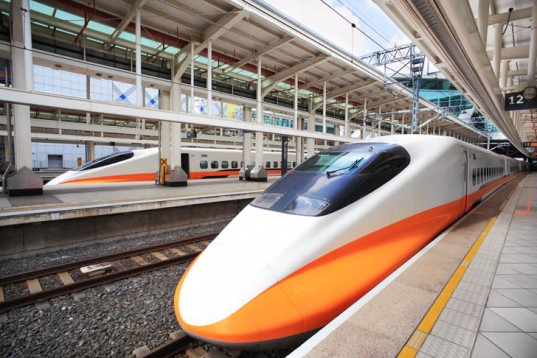Tuesday, 23/12/2025 | 01:08 GMT+7
Recycling the braking energy of a moving train is no more a matter of luxury. Rail transit authorities are challenged to increase energy efficiency of rail transportation and reduce its environmental impact. ABB’s ENVILINE energy management solutions offer up to 30 percent energy savings for direct current (DC) rail transportation. This innovative and holistic technology is presented at the 60thUITP event in Geneva.
The kinetic (movement) energy of a train can represent up to 80 percent of the total energy consumption of a rail transportation system. Whenever a train brakes at a station, its kinetic energy is converted into electricity and returned on the traction power line. Most of the time, onboard loads and distant trains can only take a small portion of this energy, and the surplus is wasted into onboard or wayside resistors.

To meet the demands on energy recuperation in traction infrastructure, ABB introduced ENVILINE energy recuperation system (ERS), which won an award in the Electrification category of Railtex 2013 in April. The ERS consists of an integrated-gate bipolar transistor (IGBT) inverter installed at the DC substation and connected in parallel to the existing diode rectifiers. The ERS recuperates the braking energy of the train and feeds it back to the AC network or feeds local auxiliary systems like air-conditioning, ventilation, lighting etc. In addition, the ERS can improve the quality of the AC power network through harmonics and reactive power mitigation, and due to bidirectional operation it can offer support to the existing rectifiers through active rectification.
If connection to the AC grid is not available, ENVILINE energy storage system (ESS) is the right solution for high energy efficiency. The ESS stores the surplus braking energy and feeds it to the power line to assist the acceleration of the train. The ESS can come with either super capacitors for short storage and recovery or with batteries for longer storage. The system improves traction power quality and manages peak power demand; it can also be used as a standalone traction power system, permanently installed or mobile, to replace conventional grid-connected traction power systems. When used with batteries, ESS can also provide emergency power and generate revenues by participating in the local energy markets.
An energy dissipation system (EDS) completes the ENVILINE energy management suite of solutions. The EDS ensures track receptivity during the regenerative braking by dissipating all surplus energy that cannot be absorbed by other onboard loads, nearby trains, or recovered by the ERS or ESS. By deploying the wayside EDS instead of onboard resistors, the rail operator reduces the train’s weight and energy consumption, and also eliminates accumulation of heat caused by braking in tunnels and underground stations.
Southeastern Pennsylvania Transit Authority (SEPTA) in USA has been using ENVILINE energy management solutions since April 2012. The solution recycles in excess of 1,200 MWh (megawatt-hours) of power a year and generates annual savings and/or revenues of up to $440,000. By the end of 2013 another project, the Warsaw metro line 2 in Poland, will be completed.
ABB’s ENVILINE family of products also includes traditional power supply components such as transformers and rectifiers, necessary to power traction vehicles; and protection devices, such as the automatic grounding system that ensure the safety of passengers and maintenance personnel in case of hazardous voltage conditions in an isolated DC traction power system.
Anh Tuan








 Webinar 2: “Financial Support for Energy Efficiency Enterprises – Opportunities and Challenges”
Webinar 2: “Financial Support for Energy Efficiency Enterprises – Opportunities and Challenges”
 Vietnamese enterprises achieve green growth and cut costs through energy efficiency
Vietnamese enterprises achieve green growth and cut costs through energy efficiency
 Capacity Building for Program Implementing Entity
Capacity Building for Program Implementing Entity
 Enhance Energy Efficiency Knowledge for Managers of Cement Industrial Enterprises
Enhance Energy Efficiency Knowledge for Managers of Cement Industrial Enterprises
 Promoting Energy Efficiency for Technical Staff of Brick and Ceramic Sector
Promoting Energy Efficiency for Technical Staff of Brick and Ceramic Sector
 Capacity building for participating financial institutions of the VSUEE Project
Capacity building for participating financial institutions of the VSUEE Project
 Capacity building for participating financial institutions in Ho Chi Minh City
Capacity building for participating financial institutions in Ho Chi Minh City